Arnold Böcklin (Basel, 1827 - San Domenico di Fiesole, 1901) was a Swiss painter, draftsman, sculptor and graphic artist and one of the leading exponents of German Symbolism. Böcklin’s painting evolved over the years, starting in his youth with naturalist themes, then feeling a different need, which led him almost unconsciously to delve into the field of the visionary and the fantastic. The protagonists of his works thus become mythological and often mysterious and dreamlike characters, almost obscure.
Recurring much in Böcklin’s works is the inner emotionality, but above all the theme of the union of life and death, which is the protagonist of the artist’s most important and well-known works such as The Island of the Dead, a painting made in several versions that had much critical acclaim. Böcklin’s works also show a very careful attention to color. The artist devoted himself to in-depth studies of technique, particularly tempera, in order to find the best way to express the hues to the fullest and further accentuate the emotional charge of his works.

Arnold Böcklin, born in Basel on October 16, 1827, was the son of a well-known Basel silk merchant, Christian Friedrich Böcklin, and was initially destined to follow in his father’s footsteps. It was his mother, Ursula Lipp, a descendant of the painter Hans Holbein the Younger, who noticed the young man’s artistic talent, and in 1845, thanks to the intercession of his mother herself and the support of the poet Wilhelm Wackernagel, who was his professor at the gymnasium, Böcklin entered theDüsseldorf Academy of Fine Arts. At the Academy he met among the teachers Johann Wilhelm Schirmer, an artist who specialized in so-called “heroic-panoramic painting,” characterized by landscapes with giant trees and boundless valleys. The latter encouraged his pupil to create bright, richly colored landscapes.
Böcklin studied under Schirmer until 1847, when he and another student named Rodolf Koller traveled to Brussels and Antwerp to see the seventeenth-century masterpieces of Flemish artists in person and was deeply fascinated.Soon after, Böcklin visited his native Switzerland and spent much time immersed in the mountains of the Alps, from which he drew further inspiration for his landscape paintings. He settled for a time in Geneva and followed an apprenticeship with Alexandre Calame, a renowned painter of alpine landscapes. Böcklin, however, did not find the experience with Calame particularly relevant, and preferred to move to Paris. The French city won him over both socially and artistically: the latest artistic trends aroused great fascination in Böcklin. In particular, he was impressed by the paintings of Eugène Delacroix, Jean-Baptiste Camille Corot, and Thomas Couture.
However, due to the political turmoil in Paris, Böcklin was forced to return to Basel, where he intensified his friendship with historian Jacob Burckhardt. The writer suggested that Böcklin travel to Italy so as to come into contact with Renaissance painting as much as possible. In 1850, therefore, Böcklin moved to Rome, and during his stay he not only came into contact with the great artistic tradition, but was enchanted by the landscapes of the Lazio countryside, which he later brought back in some of his works. In Rome he began working together with the German painter Heinrich Dreber, establishing a close friendship that later deteriorated because of different visions of painting and life. Böcklin, in fact, was very rigorous and immersed himself in his work for long hours, while Dreber was more extroverted and tended to spend time in his friend’s company and criticized his friend’s choices regarding the use of color.
Böcklin, meanwhile met a young Roman girl named Angela Pascucci, with whom he married in 1853, giving birth to twelve children, only six of whom survived childhood. At the same time he met the painter Anselm Feuerbach, who introduced him to Venetian painting. As the years passed, and as his art gradually shifted toward symbolism, Böcklin’s works did not meet the taste of his patrons, so the artist began to experience financial difficulties. Thus, he received a proposal from another German writer friend, Paul Heyse, to go to Weimar to teach at the Academy of Fine Arts. But it was not long before Böcklin felt the urge to return to Italy, and he returned on several occasions. In fact, he returned once in 1862, after which he spent periods in Munich and then in Zurich between 1874 and 1892. Finally, he moved permanently to Florence, opening an atelier that became the destination of many visitors and admirers. In 1897 a number of celebratory exhibitions were held in his honor in Basel, Hamburg and Berlin. Böcklin meanwhile had purchased, in 1895, a villa in San Domenico di Fiesole where he had moved with his family, and there he died on January 16, 1901. The artist’s remains are preserved in the Florentine Protestant cemetery agli Allori.

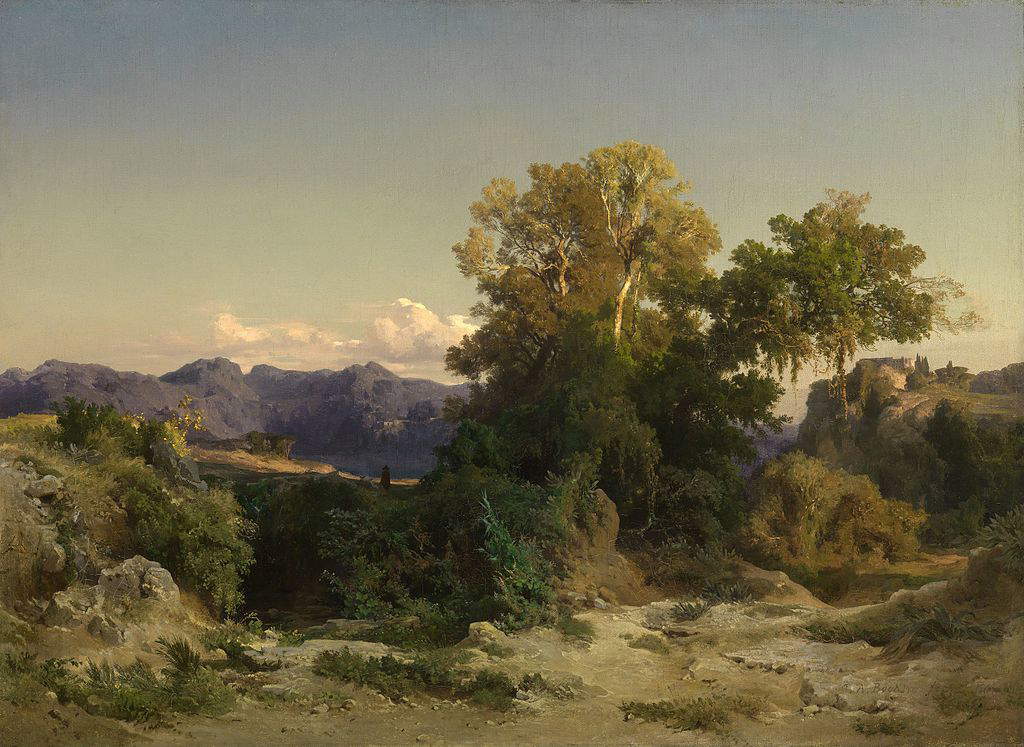
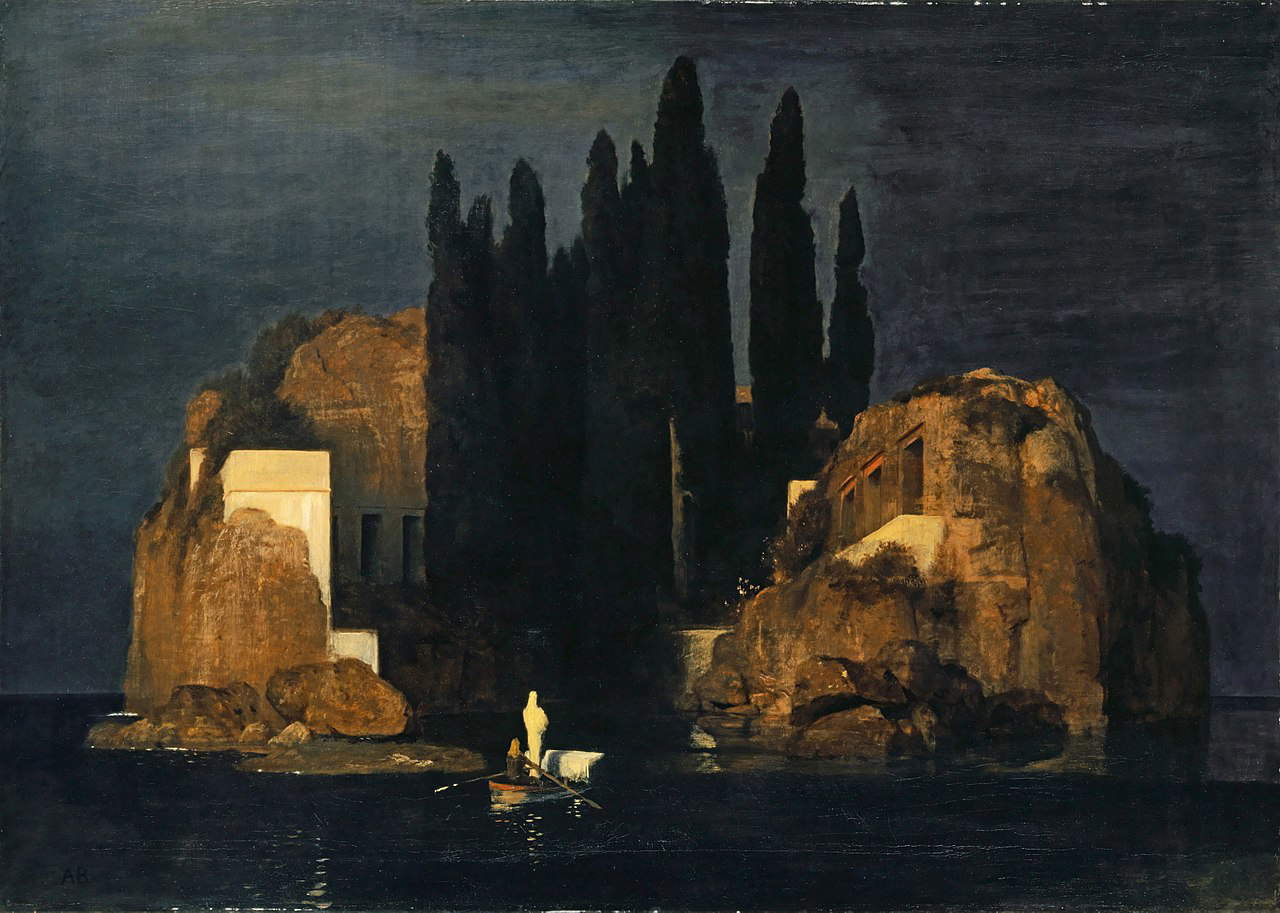
Böcklin was one of the most distinguished and important painters of the Symbolism current, which arose with the intention of seeking an alternative to Realism and Impressionism that could delve into the more spiritual aspects of humanity. According to Böcklin himself, the purpose of art was to reveal a reality that is not perceptible through reason and the senses, namely the inner reality of the human psyche. To express it, Böcklin resorted to a series of symbols, mainly derived from mythology.
Over the years, Böcklin’s painting follows an important evolution. The works of his youth are naturalistically derived, characterized by landscapes drawn from the Lazio countryside dear to him, amid ancient ruins and towering old trees. The painter preferred to set his views in the afternoon hours instead of the twilight hours, which he said were elusive, while in the warm hours the colors were more impactful, giving greater verisimilitude to the work. Echoes of Nicolas Poussin and Claude Lorrain can be recognized in these years. Soon, however, Böcklin felt that the landscape painting hitherto explored was no longer satisfying for him on a creative level, and almost on an unconscious and instinctive level he began to move into the field of the visionary, using many fantasy-like images. Figures such as mermen, sirens, nymphs, satyrs, centaurs and the like began to appear among the protagonists of his scenes, which are placed in glimpses of wild, unspoiled and vital nature. Böcklin’s predilection for this kind of unspoiled nature is certainly due to his Nordic origins.
Throughout Böcklin’s production, color turns out to be very important. The artist wished at all costs to avoid shading, keeping the colors in contrast to express the full potential of the chromatics and to give his works an even more pronounced surrealism through the use of very bright and vibrant hues. In seeking the ideal result for the rendering of color, he devoted a great deal of time to studying and researching the most suitable technique, experimenting with different types of pigment processing and testing different media on which to spread it. A writing by Giorgio de Chirico, the famous painter of Metaphysical Art, directly cites this dedication of Böcklin regarding the use of color: “The great painter of Basel has in fact always painted in tempera and was a passionate researcher of all the secrets concerning this way of painting.”
Inner emotionality is always present in Böcklin’s works in a visceral way, along with another recurring theme, namely the drama of life and death. Examples are the famous pair of paintings The Island of the Dead (1880-1886) and The Island of the Living (1888), as well as Self-Portrait with Death Playing the Violin (1872).
The first painting in chronological order, Self-Portrait with Death Playing the Violin, depicts death in the guise of a skeleton, as frequently occurred in works of “danse macabre,” which were very common in medieval painting and particularly in Switzerland,Böcklin’s country of origin. There are numerous details in the work that accentuate its charm, first of all, the skeleton is depicted playing a violin sneering in a demonic tone, so suggestively that the viewer can almost hear the eerie laughter it produces. The instrument is depicted with only one string, while the other three are broken, and the skeleton insists with his bow on the last remaining string. This detail has been interpreted as a reference to the three Fates, figures from Greek mythology who were believed to decide the fate of men by establishing the length of man’s life through strings that they severed at the moment of death. The last string of the violin, therefore, would represent the imminent end of the protagonist, which will occur when it breaks. The presence of the artist, portrayed in front of the skeleton, has been interpreted in different ways, with some critics in fact believing that he is concentratingly listening to the eerie sound coming from the violin, while others have read in it a reaction of life with respect to death, that is, the protagonist recognizing the presence of death does not despair but on the contrary finds himself again and perceives a new life drive.
The Isle of the Dead is, on the other hand, the name under which a series of five paintings made between 1880 and 1886 is grouped, the first of which was executed on commission for Alexander Günther, a wealthy and mysterious patron of Böcklin’s, with the original title A Quiet Place. It would seem that the power of the end result was such that Böcklin never wanted to part with the work again. Later, the second painting was commissioned, also in 1880, in four versions by the Countess of Oriola Marie Berna, who was fascinated by the first work, differentiating them slightly in color and changing a few small details. The third commission came in 1883 from art dealer Fritz Gurlitt. This was the first time the title Die Toteninsel (The Island of the Dead) was used. The fourth, on the other hand, was made in 1884 by Böcklin solely to make a profit from it, due to economic difficulties, but it was destroyed during a bombing raid in World War II. The fifth and final version was made in 1886 at the request of the Leipzig Museum of Fine Arts, where the painting is still preserved today.
The scene depicts a small island surrounded by water, on which rocky boulders stand out vertically, in which chambers (most likely with a funerary function) are carved out. The verticality of the composition is accentuated by the long cypress trees arranged in the center of the semicircle formed by the arrangement of the rocks. The entrance to the islet consists of a marble pillar on which is placed one (or two, in some versions) marble lion. Near the islet comes a small boat on which is a ferryman, a probable reference to the mythological Charon, ferryman of souls, and a mysterious figure covered in a white cloak. Several details lead one to speculate that the place portrayed is a mysterious cemetery hidden from the eyes of most, including the presence of cypress trees, trees that indicate the presence of a cemetery, the figure in white that could be a soul, and the festively decorated caisson placed on the boat arriving on the island, which could be a coffin.
Böcklin’s intent was to give life to a work capable of eliciting personal reactions in the viewer depending on his or her feelings and sensations with respect to death and life, accentuating the feeling of mystery and especially of rarefied silence that the work suggests, achieved through expedients such as the water being totally still despite the passage of the boat, and the absence of any form of life on the island. As if to counteract the funereal charge of these works, Böcklin produced a complementary version entitled The Island of the Living (1888). In this work we find the same scenic setting as in The Island of the Dead, enriched this time by decidedly vital elements, such as swans, palm trees, and men and women celebrating and dressed in bright colors, although there is no shortage of shadowy elements.
The Isle of the Dead was not only favorably received at the time, but soon became a benchmark for Symbolist painting because of the way the feeling of mystery and desolation are transposed onto the canvas. The work inspired and aroused the imagination of a host of artists ranging from Giorgio de Chirico to Salvador Dalí, to great figures in history such as statesman Lenin and writers Sigmund Freud and Gabriele d’Annunzio, who spoke of it extensively in their writings (Gabriele D’Annunzio, by the way, wanted to hang a reproduction of the painting in his bedroom). It was copied numerous times, becoming accessible to a wide audience that would not normally have been able to go to museums to admire it live.
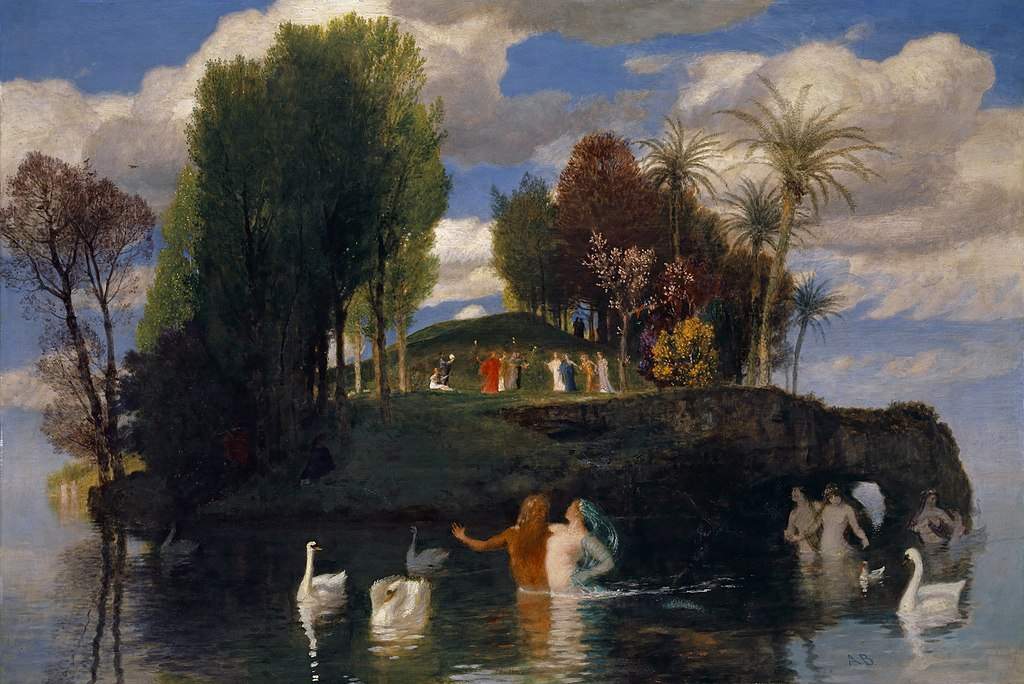
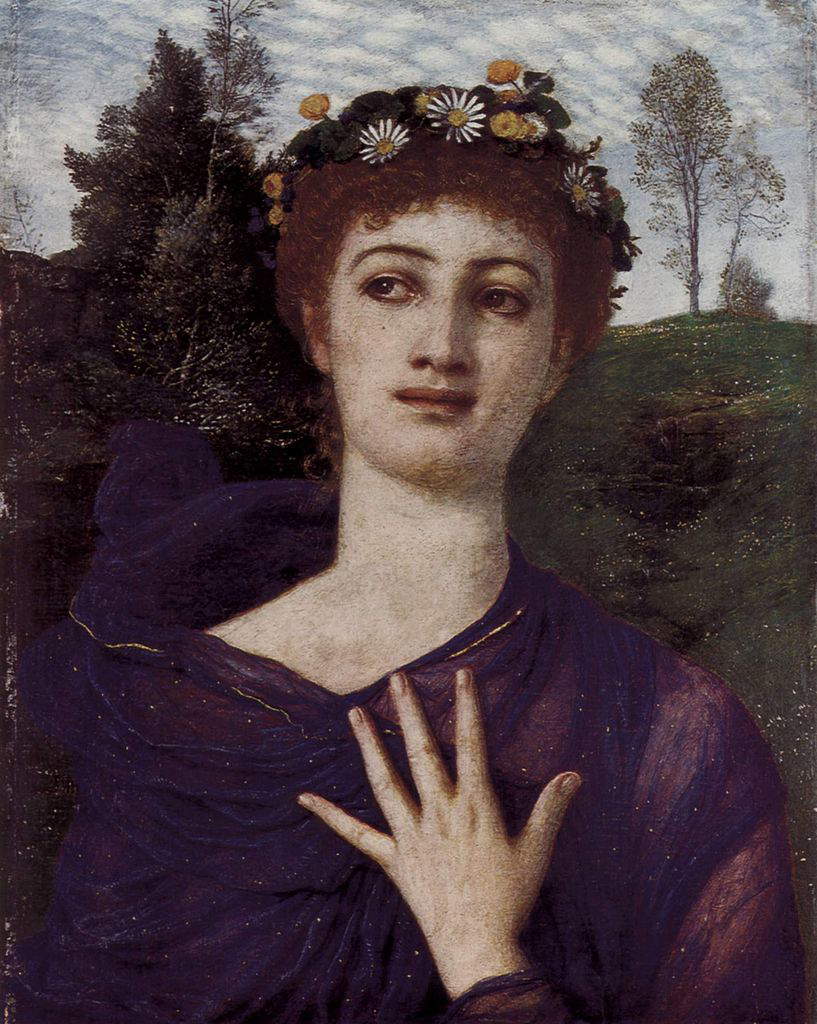
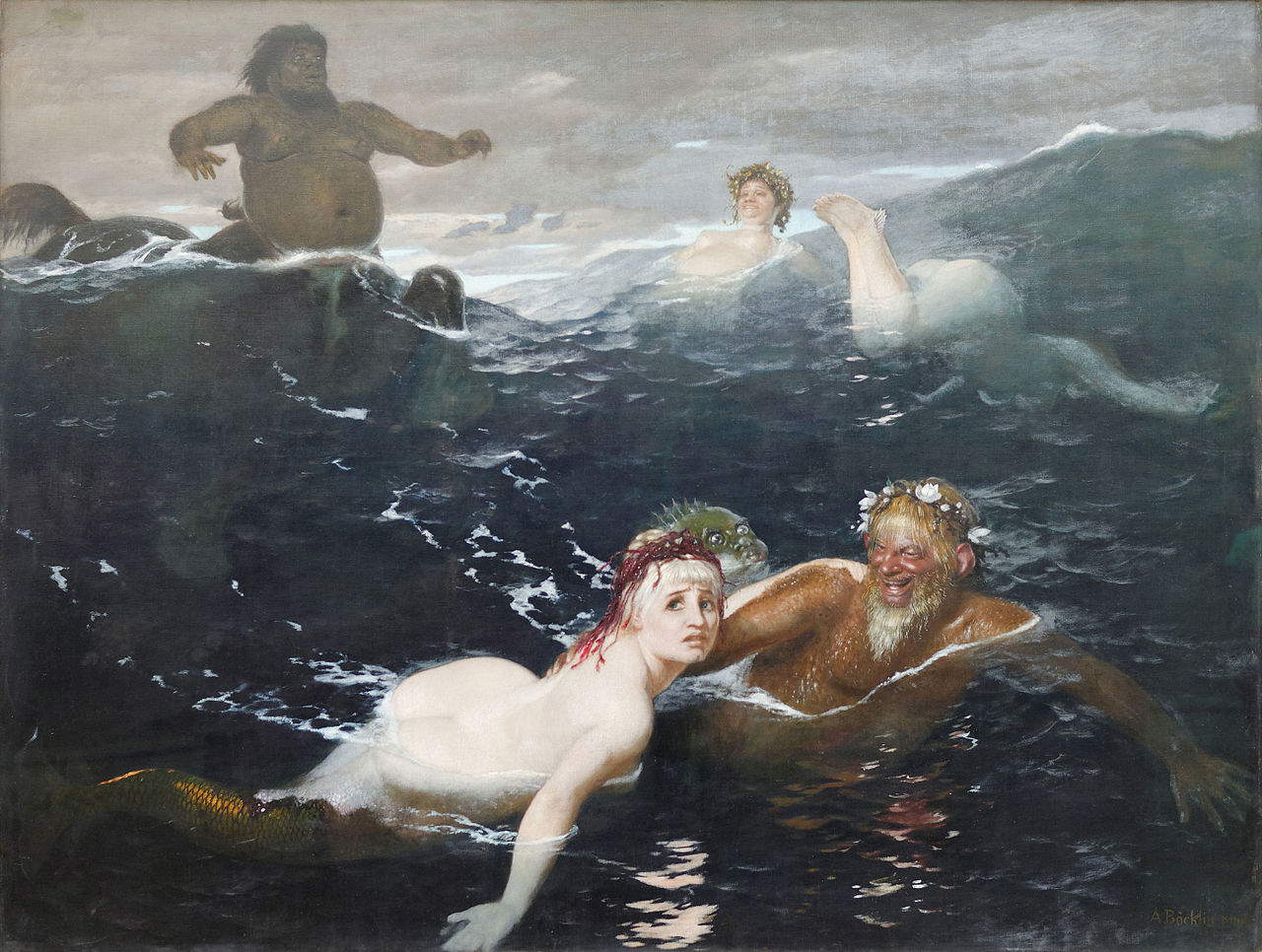
Böcklin’s works are preserved among the collections of major European museums.
In Basel, the painter’s hometown, a group of important paintings consisting of Plateau with Firs Whipped by the Storm (1849), Ideal Portrait of Angela Böcklin as muse (1863), Portrait of his daughter Lucia (1864), The Island of the Dead (first version - 1880), The Play of the Naiads (1886), The Island of the Living (1887), Vita Somnium breve (1888), The Plague (1898) are in the Kunstmuseum. Another substantial nucleus of works is in Berlin, in the Alte Nationalgalerie, where you can see Landscape with Castle Ruins (1847), The Artist and His Wife (1863-64), Self-Portrait with Death Playing the Violin (1872), Backwash (1879), The Island of the Dead (third version - 1883).
Böcklin’s works are also kept in Leipzig, in the Museum der bildenden Künste. These are Flora (1875) and The Island of the Dead (fifth version - 1886). One painting is also preserved in the Louvre in Paris, namely Hunting Diana (1894). Finally, The Island of the Dead (second version - 1880) is in the Met - Metropolitan Museum of New York. In Italy, the Uffizi conserves a late self-portrait from 1898-1899.
 |
| Arnold Böcklin, life and works of the great Symbolist painter |
Warning: the translation into English of the original Italian article was created using automatic tools. We undertake to review all articles, but we do not guarantee the total absence of inaccuracies in the translation due to the program. You can find the original by clicking on the ITA button. If you find any mistake,please contact us.